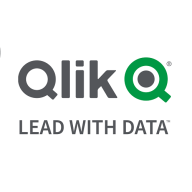

Pentaho Data Integration and Analytics and Qlik Compose compete in the data management solutions category. Pentaho's open-source model is highly appreciated for cost-effectiveness, while Qlik Compose is recognized for its sophisticated data modeling features.
Features: Pentaho Data Integration provides a comprehensive feature set, including extensive support for databases and big data technologies, flexible open-source architecture, and an intuitive interface that supports rapid development and complex data transformations. Meanwhile, Qlik Compose offers advanced automation capabilities, real-time replication, and efficient automatic code generation, noted for ease of use in graphical data representation.
Room for Improvement: Users of Pentaho note the need for better logging and scheduling tools, a more intuitive user interface, and enhanced integration with various data sources. The open-source model presents challenges with consistency in updates and documentation. Qlik Compose requires improvements in monitoring features, scalability, and visual data flow management as users face difficulties managing large datasets and the complexity of implementation.
Ease of Deployment and Customer Service: Pentaho Data Integration is praised for flexible deployment across on-premises and cloud environments, with strong community support, although direct vendor support is minimal. Qlik Compose offers structured technical support, although it can be slow in resolving complex issues, with versatile deployment options.
Pricing and ROI: Pentaho is lauded for its cost-effectiveness, especially the free Community Edition, reducing ETL development time and improving ROI without high licensing fees. Qlik Compose has pricing based on data volume and specific use cases, with valuable features justifying its higher cost for many users. Both solutions effectively reduce development time and enhance data management efficiencies.
| Product | Market Share (%) |
|---|---|
| Pentaho Data Integration and Analytics | 1.7% |
| Qlik Compose | 1.0% |
| Other | 97.3% |


| Company Size | Count |
|---|---|
| Small Business | 17 |
| Midsize Enterprise | 16 |
| Large Enterprise | 25 |
| Company Size | Count |
|---|---|
| Small Business | 3 |
| Midsize Enterprise | 3 |
| Large Enterprise | 6 |
Pentaho Data Integration stands as a versatile platform designed to cater to the data integration and analytics needs of organizations, regardless of their size. This powerful solution is the go-to choice for businesses seeking to seamlessly integrate data from diverse sources, including databases, files, and applications. Pentaho Data Integration facilitates the essential tasks of cleaning and transforming data, ensuring it's primed for meaningful analysis. With a wide array of tools for data mining, machine learning, and statistical analysis, Pentaho Data Integration empowers organizations to glean valuable insights from their data. What sets Pentaho Data Integration apart is its maturity and a vibrant community of users and developers, making it a reliable and cost-effective option. Pentaho Data Integration offers a range of features, including a comprehensive ETL toolkit, data cleaning and transformation capabilities, robust data analysis tools, and seamless deployment options for data integration and analytics solutions, making it a go-to solution for organizations seeking to harness the power of their data.
Qlik Sense is a powerful business intelligence tool that offers a range of features to help organizations make faster and more informed decisions. Its primary use cases include operational and financial dashboards, self-service reporting, and centralized access to cross-functional reports. The solution is praised for its mobile platform, ease of use, data-sharing capabilities, and extensibility.
Qlik Sense has helped organizations improve data literacy, reduce time consumed in complex reports, and provide widely available MI to senior stakeholders. It also enables self-service analytics, improves data quality and governance, enhances collaboration, and reduces costs.
We monitor all Data Integration reviews to prevent fraudulent reviews and keep review quality high. We do not post reviews by company employees or direct competitors. We validate each review for authenticity via cross-reference with LinkedIn, and personal follow-up with the reviewer when necessary.